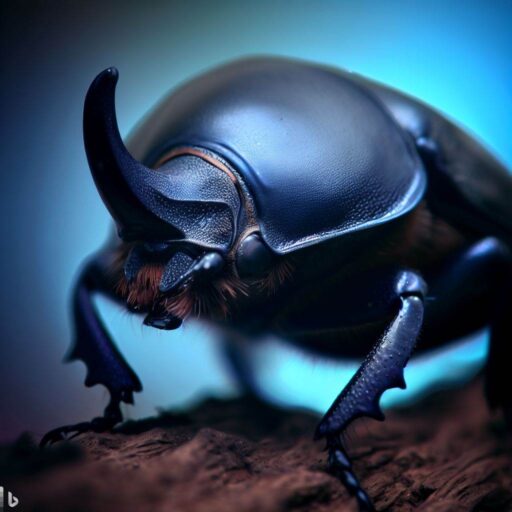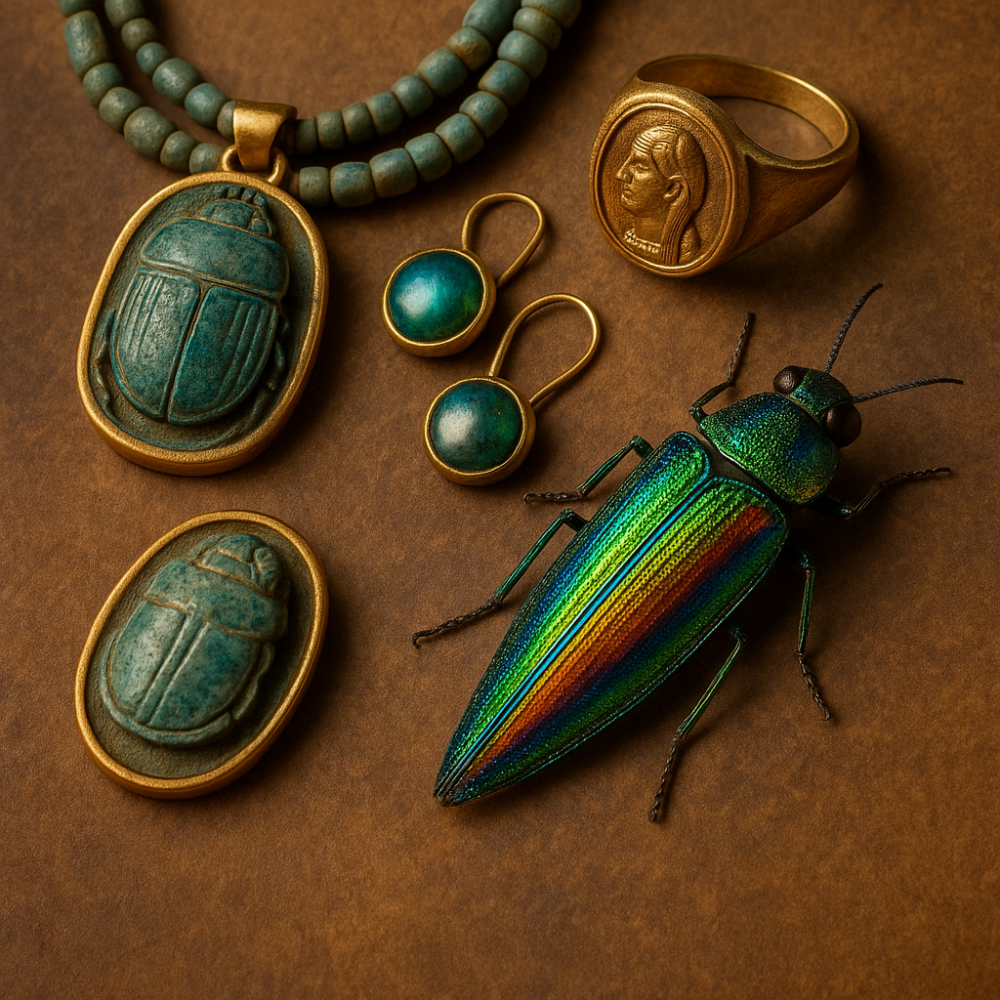.jpg)
Where do June Bugs Go During the Day
- June bugs shelter during the day: June bugs have a sheltering behavior during the day to protect themselves from predators and environmental factors.
- Common hiding spots for June bugs: They can be found hiding in places such as under leaves, in tall grass, or in tree trunks.
- Finding June bugs during the day: To find June bugs during the day, look in suitable hiding places and consider using traps to attract them.
Curious about the mysterious behavior of June bugs during the day? Unravel their secrets as we dive into understanding their fascinating behaviors and habits.
Discover how these intriguing insects navigate their way through the world and uncover hidden facts that shed light on their whereabouts during daylight hours.
Get ready for a fascinating journey into the world of June bugs, where we explore their peculiar actions and uncover the truth behind their daily whereabouts.
Understanding the behavior of June bugs
June bugs are curious insects. They have a unique look and do interesting things during the day.
At night, you can often hear the buzzing of these bugs as they fly around.
Also, they’re drawn to light sources. To locate them during the day, it’s important to understand their behavior.
June bugs generally hide in places like trees, bushes, burrows, and crevices.
This helps protect them from predators. Environmental factors, such as temperature and humidity, also influence where they hide.
Plus, animals that eat insects are always a threat.
To find June bugs during the day, look in gardens with lots of plants.

Shaded areas near trees and shrubs are also great places to look. Traps, like light traps or pheromone-based traps, can also help.
They mimic the scent of female June bugs.
If you want to see or capture these creatures, you must know their behavior.
Search for them in their favorite hiding spots during the day. With the right tactics, you can find June bugs and learn more about them.
Description of June bugs

June bugs are beetles belonging to the genus Phyllophaga.
They are usually seen in May or June, hence their name. They have oval-shaped bodies and hard outer wings. The wings can be brown or black.
June bugs have six legs and antennae to sense their environment. They are nocturnal and attracted to lights.
June bugs have a specific life cycle. Female adult June bugs lay eggs in the soil.
The eggs hatch into white and C-shaped grubs. These grubs eat the roots of plants for several months.
Then they pupate in soil chambers. After changing, adult June bugs come out of the soil and live for around two weeks.
June bugs hide when it’s day. They shelter from predators and from the environment.
They may hide under rocks, logs, leaves or tree bark crevices.
The hiding places offer protection from the sun, extreme temperatures and predators.
June bugs’ hiding behavior is affected by environmental factors like temperature, humidity and light intensity.
For instance, they tend to hide in cooler and darker places when it’s hot.
Also, predators like birds or small mammals can influence where June bugs hide.
To find June bugs during the day, look in gardens with dense vegetation.
Look in areas with decaying organic matter such as compost piles or flower beds. Another method is to use traps baited with pheromones or artificial lights.
Daily activities of June bugs
June bugs are renowned for their daily activities. These include feeding, mating, flying, resting, grooming, and sensory exploration.
Feeding on plant foliage, flowers, and fruits, they can cause damage to crops if their population isn’t managed. For further information on June bug eating habits, check out What Do June Bugs Eat.
To attract mates, they release pheromones and engage in courtship behavior.
They are nocturnal yet may fly during the day to search for food and mates.
Resting in shaded areas like tree branches or dense vegetation preserves energy.
They groom by using their legs and mouthparts to wipe dirt and debris.
Antennae and sensory organs help them explore the environment and locate food sources or shelter.
June bug behavior can be impacted by factors such as warmth, humidity, and resources.
They have adapted to a diurnal cycle to make use of light and warmth.
Researchers can use this info to create pest control or conservation strategies.
Where do June bugs go during the day?
Wondering where June bugs disappear to during the day? Get ready to uncover their secretive hiding habits in this section.
We’ll explore the sheltering behavior of June bugs and discover their common hiding spots. Hold on tight – you’re about to uncover the mystery behind these elusive creatures!
Sheltering behavior of June bugs
June bugs have a natural instinct to hide from potential threats and harsh conditions.
They seek shelter in dark, moist places, such as under leaves, rocks or logs.
They may also burrow or hide in crevices in the ground.
Various factors influence their sheltering behavior.
Temperature, humidity, light levels and the presence of predators or threats in the area can all play a role.
If you are looking for June bugs during the day, search in dark, moist areas near water sources or vegetation.
Traps can also be an effective way to attract them towards a certain location.
By understanding their sheltering behavior and using the right techniques, you can increase your chances of finding these fascinating insects.
Common hiding spots for June bugs
June bugs are known for their crafty hiding spots during the day.
Such spots provide them with protection from potential predators and a suitable environment to rest.
To help locate June bugs more effectively, here are the most common hiding spots they go to:
- In soil: Burrowing underground is a common June bug activity.
- Under foliage: Taking advantage of shade provided by vegetation is a favorite tactic of theirs.
- In tree crevices: Trees with rough bark or crevices offer June bugs plenty of places to hide.
- Around buildings: Look for them in cracks on walls, gaps in roofs, or other sheltered areas.
- Under rocks or logs: Natural objects like rocks and logs provide cool and dark spaces for hiding.
- Inside hollow stems: Some plants have hollow stems that attract June bugs.
Knowing where June bugs hide is key when trying to locate them.
Searching in these areas increases the chances of finding these elusive insects.
June bugs are known to remain inactive during the day – conserving energy for their nocturnal activities – which is why understanding their hiding places is especially important when studying their behavior or managing infestations.
It’s said that June bugs are so good at hiding, they could be undercover agents for the insect world!
Factors influencing the hiding behavior of June bugs
The hiding behavior of June bugs is influenced by various factors, including environmental conditions and the presence of predators and threats.
Understanding these influences can provide insights into the patterns and behaviors of these fascinating insects.
From their preferred hiding spots to their responses to specific environmental cues, this section explores the factors that shape the hiding behavior of June bugs.
Environmental factors
Environmental factors have a big influence on June bugs’ hiding habits.
They quickly respond to their environment and adjust their hiding ways based on what they experience.
Temperature, humidity, and vegetation are some of the factors that can significantly change where the bugs hide.
Knowing and taking into account these environmental factors can help researchers and bug enthusiasts to understand the behavior and life cycle of June bugs better.
Predators and threats
June bugs face many threats, such as predation by birds, bats, and small mammals.
Plus, spiders, ants, and beetles prey on them. Parasitic insects, like wasps and flies, can lay their eggs on them.
Pesticides in residential areas can cause population decline. Habitat destruction, urbanization, and pollution also affect them.
Diseases can also weaken their numbers.
Besides these risks, other factors might be impacting June bug populations.
To defend them, we need to create suitable habitats and limit pesticide use. Raising awareness can help too.
With these steps, we can help ensure the survival of June bugs for future generations.
How can you find June bugs during the day?
Wondering how to spot June bugs during the day? Explore effective strategies that will help you uncover these elusive creatures.
From seeking out their preferred hiding spots to utilizing clever traps, this section offers valuable insights into locating June bugs when the sun is up.
Get ready to discover the secrets of finding these fascinating insects in broad daylight.
Looking in suitable hiding places
June bugs hide during the day. They try to find spots that protect them from harm. These places are vital for their daily activities and safety.
To spot June bugs during the day:
- Be aware of common hiding spots. These include grass, shrubs, and trees. Searching these areas increases the chances of finding June bugs.
- Inspect areas with moist soil. June bugs may also hide in dark or shaded areas. Check gardens and parks for June bugs.
- Try traps designed to attract them. This can be a successful way to find them during the day.
Note that their hiding behavior can be affected by other things, such as threats or environmental conditions.
Knowing these can help discover where they hide during the day.
Using traps to attract June bugs
To attract June bugs with traps, using the right keywords and keeping HTML tags intact is key.
Place traps near places they seek shelter, such as plants, mulch beds or tree trunks. Use specific pheromones or bait to lure them in.
Optimize trap design to match their behavior and preferences. Check and empty the traps regularly.
Discard captured June bugs in sealed bags or containers. With these steps, trapping can be a successful method.
Searching suitable hiding places under vegetation or debris may also bear fruit.
To up the efficiency, combine multiple types of lures and trap designs.
Don’t forget to incorporate the keywords naturally and keep the HTML tags!
Conclusion
June bugs, also known as June beetles, are nighttime insects. They’re mostly found in the warm summer months, especially in June.
During the day they hide and protect themselves from predators and heat. They bury themselves in soil, hide in vegetation or find other dark, cool spots to rest.
This helps them conserve energy, ready for night-time when they become active.
Plus, they’re attracted to artificial light sources like porch lights and street lamps.
Some Facts About Where do June Bugs Go During the Day:
- ✅ June bugs spend the day sheltered underground.
- ✅ Females of many species have short wings and are essentially flightless.
- ✅ June bugs have the opportunity to develop an immune system and make plans to survive winters.
- ✅ June bug larvae, or grubs, can be pests of grasses and crops.
- ✅ June bugs do not pose a threat to people and are fairly easily controlled as garden pests. (Source: Trees.com)
FAQ
Where do June bugs go during the day?
June bugs spend their days sheltered underground. They prefer to hide in the soil, protecting themselves from predators and extreme weather conditions.
Why are June bugs considered members of the Scarab family?
June bugs belong to the Scarab family because they share certain characteristics with other beetles in this family. One distinguishing feature is the presence of three plates on their antennae.
Do June bugs belong to the order Hemiptera?
No, June bugs do not belong to the order Hemiptera. They are beetles in the order Coleoptera. The order Hemiptera includes true bugs, while June bugs are classified as beetles.
Are June bug larvae parasitized by the American Pelecinid wasp?
Yes, the larvae of June bugs can be parasitized by the American Pelecinid wasp. The wasp’s larvae are parasites of ground-dwelling beetle grubs, including those of June bugs.
What is the significance of the Scarab family to ancient Egyptians?
Ancient Egyptians revered scarabs, which is the family to which June bugs belong. Scarab beetles were considered sacred and symbolized rebirth and regeneration in ancient Egyptian culture.
Why do June bugs have sticky legs?
June bugs are often described as clumsy and clingy due to their sticky legs. This stickiness helps them grip surfaces and climb vegetation, making it easier for them to navigate their environment.





Leave a Reply